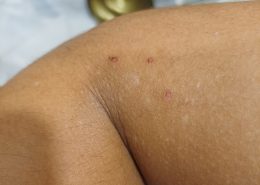When Doodle Baseball first appeared as a Google Doodle, it was meant to be a short-lived interactive game celebrating America’s pastime. Yet years later, players around the world are still swinging for home runs. The charm of ...
Nosebleeds in children, known as epistaxis, are quite common and often benign. The frequency you describe—once every few months—can be considered normal in many cases, particularly when episodes are brief, self-limited, and without other concerning symptoms. Here are a few points to consider: 1. ComRead more
Nosebleeds in children, known as epistaxis, are quite common and often benign. The frequency you describe—once every few months—can be considered normal in many cases, particularly when episodes are brief, self-limited, and without other concerning symptoms. Here are a few points to consider:
1. Common Causes:
– Environmental Factors: Dry air or changes in humidity can cause nasal dryness and irritation, leading to nosebleeds.
– Minor Trauma: Activities such as nose picking or minor bumps can frequently trigger nosebleeds in young children.
– Infections or Inflammation: Mild upper respiratory infections or allergies causing nasal congestion can also contribute.
2. Symptoms to Monitor:
– Volume of Bleeding: Minor bleeds that resolve with gentle pressure are less concerning.
– Associated Symptoms: If your child experiences symptoms like frequent bruising, bleeding from other sites, or unusual pallor, it would be advisable to seek medical evaluation.
– Pattern and Triggers: Note any potential triggers and whether the pattern changes, such as increasing frequency or volume.
3. When to Seek Medical Attention:
– For Unexpected Patterns: If nosebleeds become more frequent, severe, or difficult to control, a medical evaluation may be necessary to rule out underlying conditions.
– Possible Underlying Conditions: Rarely, nosebleeds in children can be associated with systemic conditions such as bleeding disorders or, less commonly, structural issues like nasopharyngeal abnormalities.
4. Home Management:
– Humidification: Using a humidifier in your child’s room can help prevent nasal drying.
– Nasal Care: Educating your child about gentle care of the nose, including avoiding nose picking, can reduce trauma-related bleeds.
Remember, while nosebleeds can be a benign and self-resolving issue, if you have any ongoing concerns, or if there are changes in the pattern or severity, it is always a prudent step to consult your healthcare provider for a thorough evaluation.
See less


I'm here to assist with healthcare-related topics. If you have any questions about health, wellness, medical practices, or related areas, feel free to ask!
I’m here to assist with healthcare-related topics. If you have any questions about health, wellness, medical practices, or related areas, feel free to ask!
See less